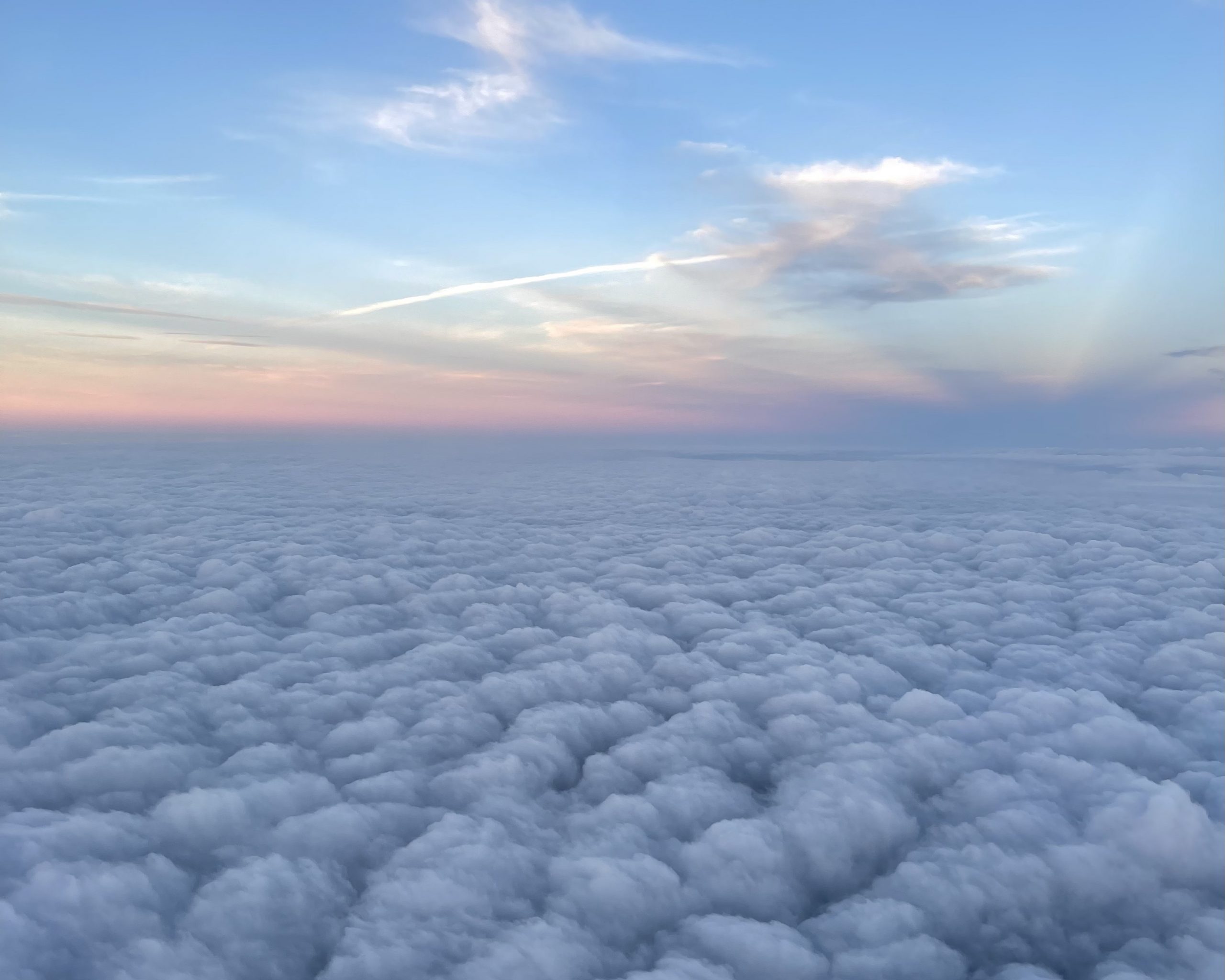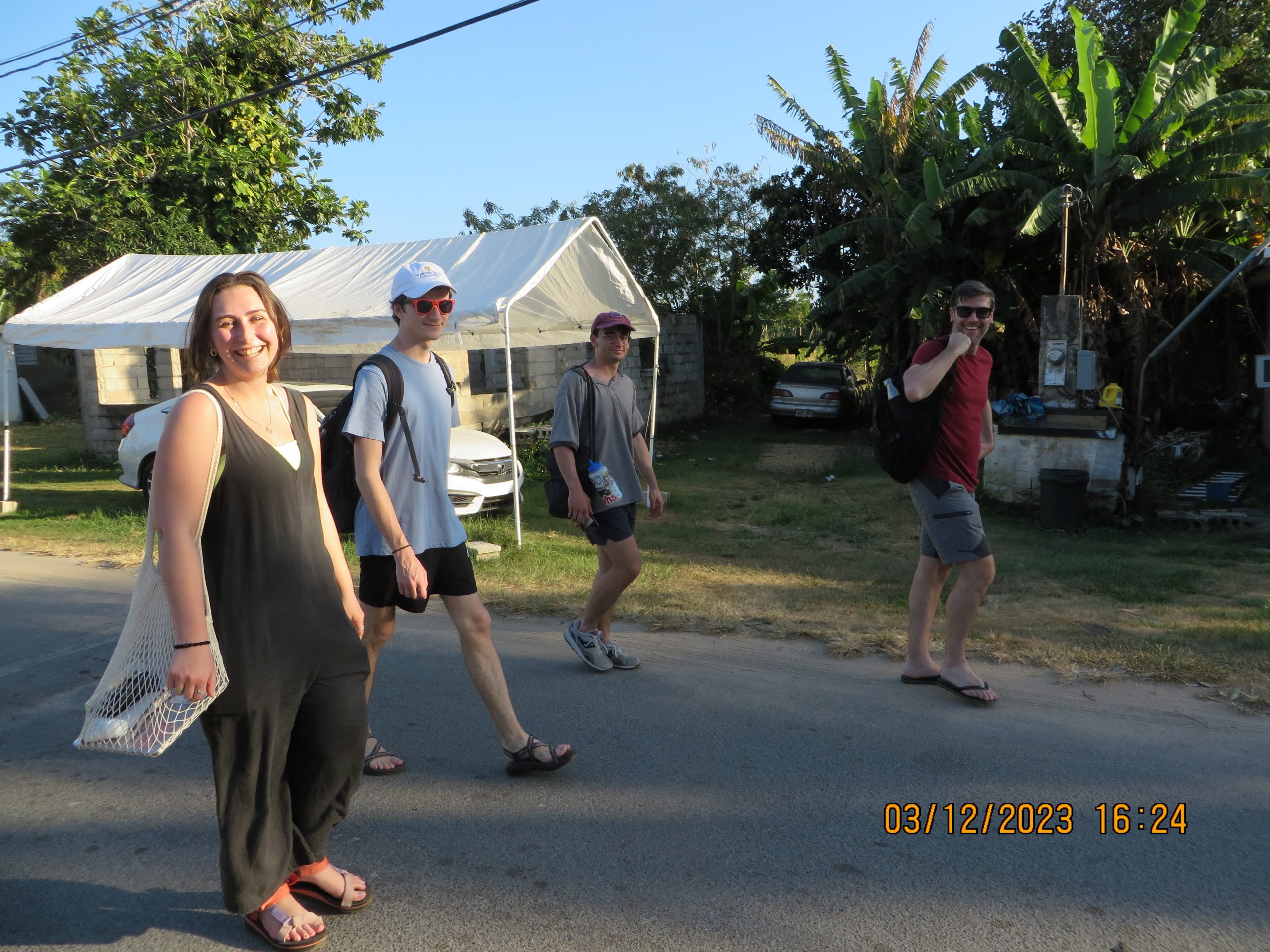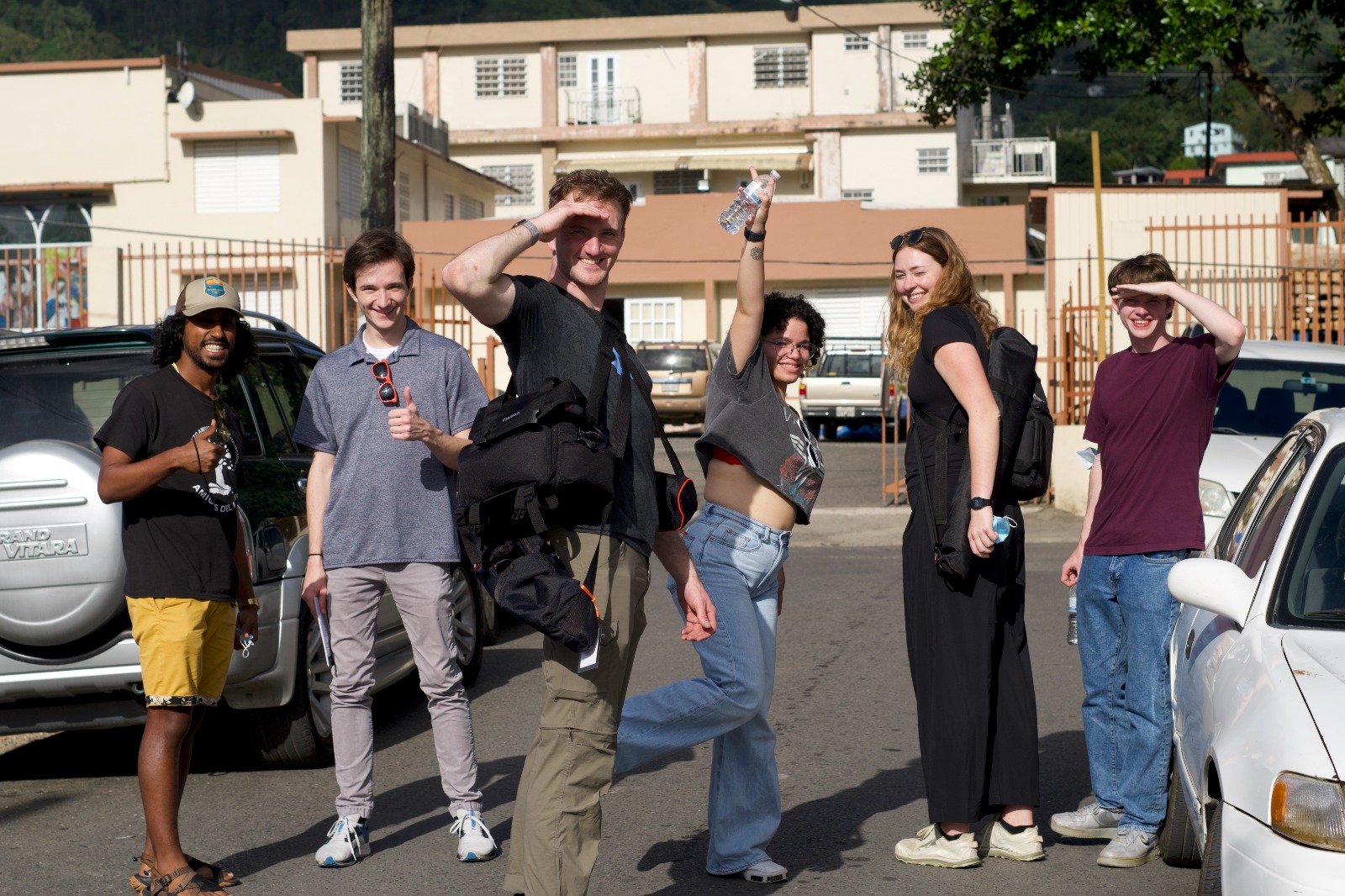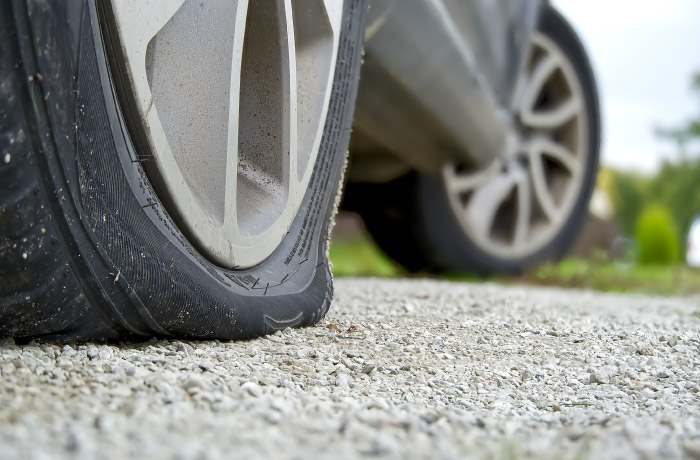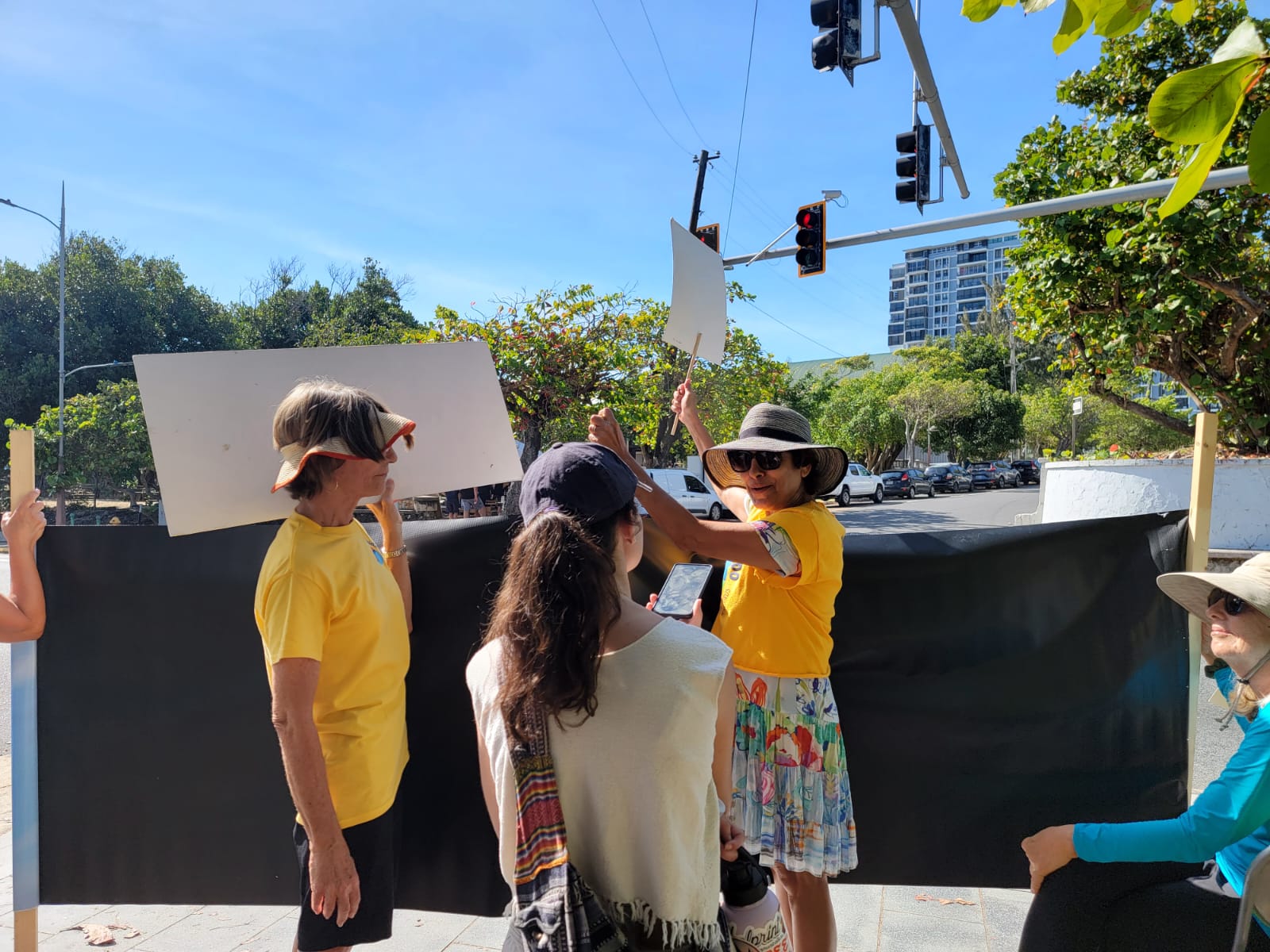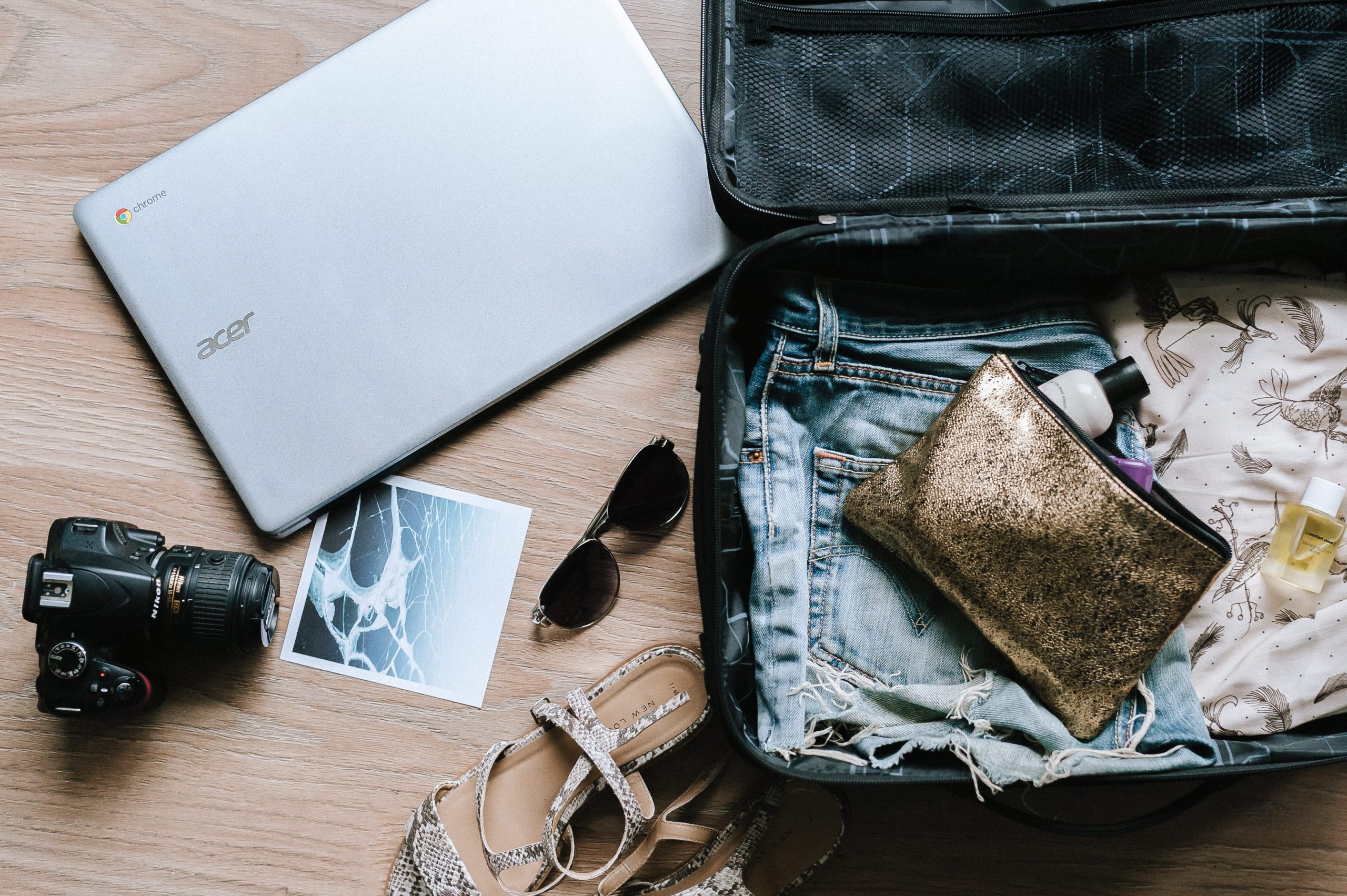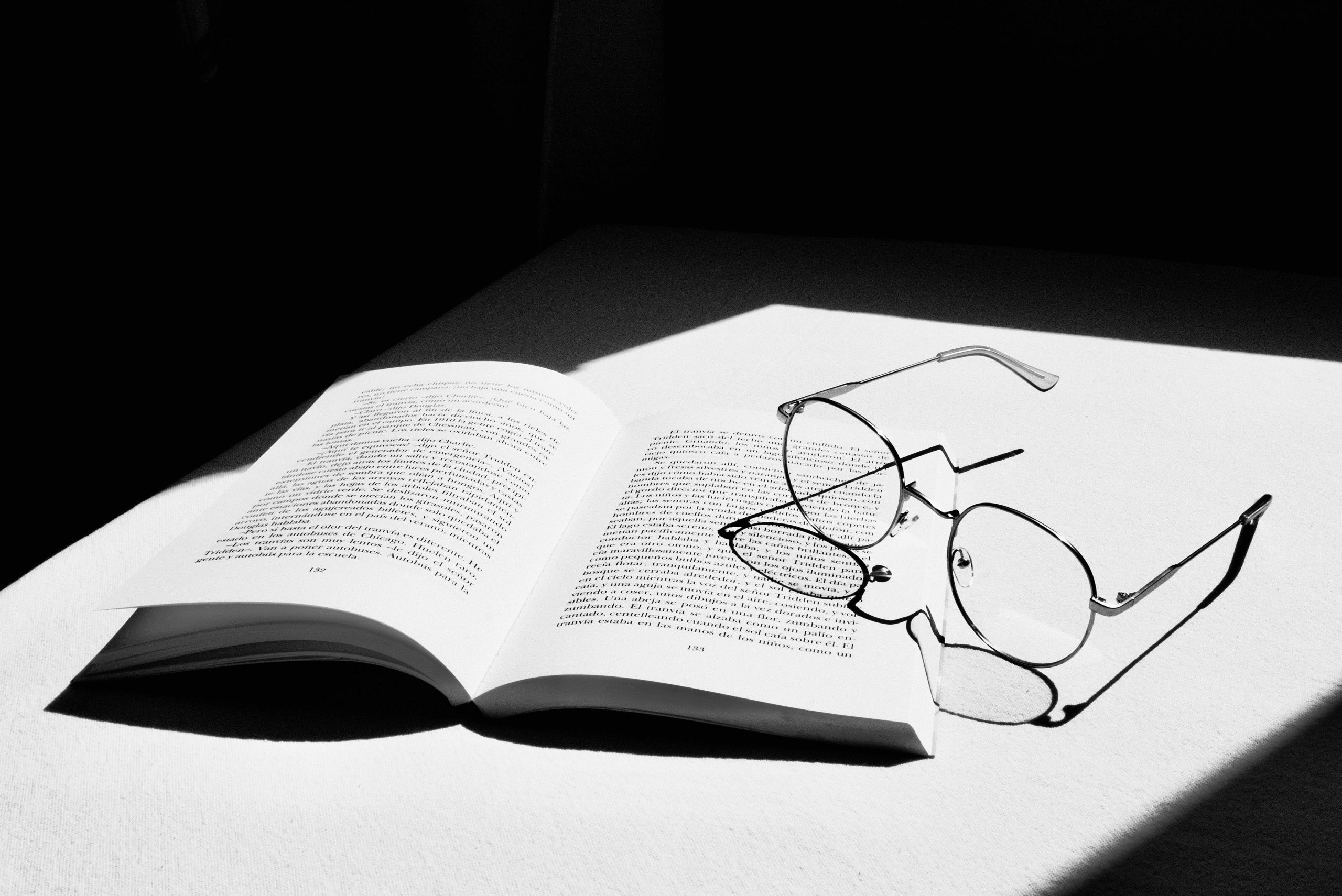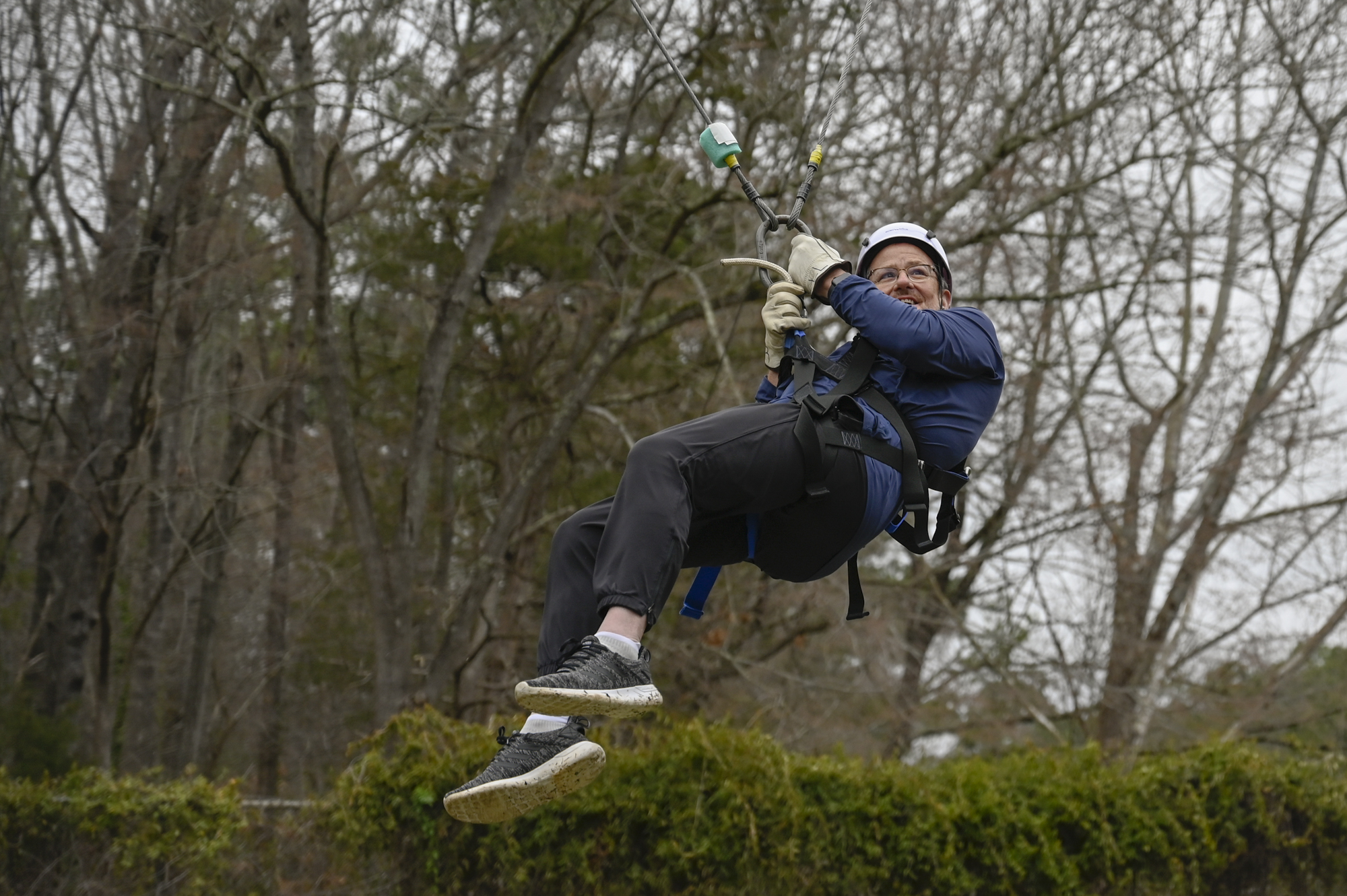Grounding Myself In The Water
By Elise Mahon
I watched through my viewfinder as Claire, my video partner, flipped over the side of the boat with our story partner to film him scuba diving. I pulled my eyes away as the last of their splash fell back down to the water. My eyes adjusted to the brightness of the scene before me: the volcanic rock walls of León Dormido shot up from blue-green waves, its peaks reaching far above the upper deck of our guide boat. I was vaguely aware of the butterflies fluttering in my stomach as the boat rounded a corner and began to move parallel with the rock toward the spot we’d be jumping in to snorkel.
I was determined to film as much of the process of leaving the bay in San Cristóbal and heading out to sea as possible. Focusing on filming would keep both my nerves in check and me from psyching myself out. From the moment I arrived in San Cristóbal we’d been filming and war-gaming, planning as much as we could to make the most of the short week we had to film our documentary. It was exhilarating, but I also had very little time to take in the reality of where I was, what I was doing, and the personal shortcomings I would have to overcome to succeed.
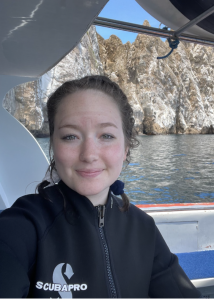
But now, it was just me and the group of soon-to-be-snorkeling strangers on the boat. It was one of the first quiet-ish moments I’d had to myself in days.They all clambered awkwardly around, putting on their flippers and rash guards, preparing to jump into the water.
The water. The ocean. The big open abyss of nothing that I couldn’t see the bottom of, where I knew things bigger than me were waiting. As a kid raised on Nat Geo and Animal Planet who wished she was born as Bindi Irwin, I was obsessed with science, zoology, and the natural world. But I was also terrified of the ocean and scarred by an unfortunately early viewing of the entire Jaws trilogy at only two years old.
Now on the deck of the boat, I found myself confronted with the antithesis of what I needed to feel to realize my childhood hopes and dreams: I was afraid to jump. Afraid to let myself fall, to let myself be untethered in an environment entirely not my own.
It was something I knew I’d have to face in the months leading up to this trip. I had always wanted to go to the Galápagos, not only to indulge my affinity for the place as fundamental to the development of evolution, biology and science, but also as a beautiful unique ecosystem full of narrative storytelling power. Last spring I wrote an article about research UNC scientists are conducting in the islands and vowed that I would go to craft a story there myself at some point in my career. I couldn’t have guessed “some point” would come so soon.
The butterflies were feeling less fluttery and more like a hail storm knotting my insides. Before putting away my camera I shifted the angle to look straight up at the top of the rock. I braced myself against the boat and looked through the viewfinder again.
León Dormido stood proudly, pushing up against the bright blue sky. The sun glinted off the backs of huge frigate birds flying overhead, their shadows coasting along the craggy peak, tufts of pale grass swayed in the breeze.
Suddenly the knot of emotion wasn’t in my stomach but in my throat, welling up inside of me until tears spilled out of my eyes and down my cheeks, distorting the beautiful scene in front of me into blurry shapes and colors.
I was overcome with the realization that I was here, in the Galápagos, filming a documentary rooted in a motivation to protect this amazing place. I was doing what I was supposed to be doing and one step closer to being who I’d wanted to be since I was kid.
I put my camera down and stood there looking up at the top of the rock and the birds flying, breathing in that moment.
Minutes later as I sat poised on the edge of the boat, the expanse of ocean before me, I didn’t spiral into an anxiety-ridden abyss of what-ifs. I told that little voice to shut up, turned on my go-pro, and jumped into the water.
ABOUT THE AUTHOR
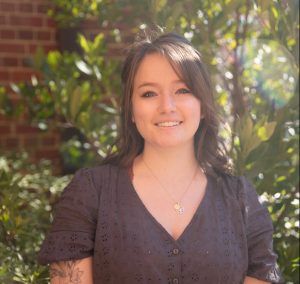
Elise Mahon
Elise Mahon is a senior majoring in visual journalism and minoring in environmental studies and anthropology. She loves to work in the field alongside the people fighting to protect the environment and create a more sustainable future for our planet. She’s also moved over 12 times and pronounces her name “Alyssa” — confusing, we know.


